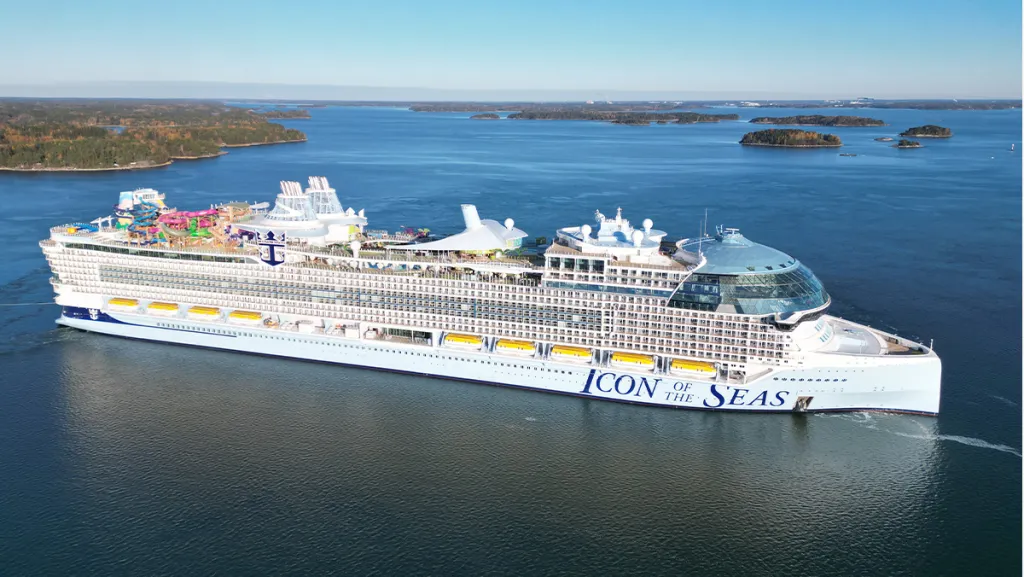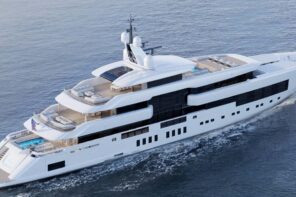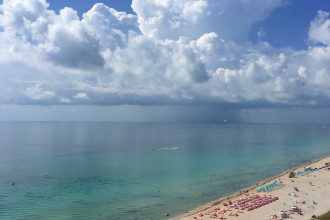It’s pleasant. However, is it truly possible to enjoy a five-star, private experience with 7,000 other passengers on the recently launched “Icon of the Seas”? The outcomes weren’t entirely consistent.
On Royal Caribbean’s newest ship, Icon of the Seas, the most exclusive offering is the eight-course tasting menu at the Empire Supper Club. With a sleeping capacity of over 7,000, the boat is the largest cruise ship in the world. Styled like a subdued jazz club with art deco influences in New York City, The Empire appears paradoxical within this enormous aquatic maze, featuring a five-story “Central Park” and a Royal Promenade running through the middle, in addition to numerous decks, climbing walls, mini-golf courses, water parks, and forty eating and drinking establishments.
In contrast, the Empire only seats thirty-six people per evening in a single two-and-a-half-hour seating, guaranteeing that those who dine there are among the top 0.5 percent of passengers on the ship. The show and dinner are an upsell for $200 per person.
A reservation at the Empire is not included in the array of carte-blanche “inclusions,” not even for guests staying in Royal’s new ultra-luxurious Star Class suites, which can run up to $100,000 per week.
Jay Schneider, Chief Product Innovation Officer at Royal Caribbean, gives us a tour of the vessel. “It’s an experience,” he says. “People have to be motivated to do it.”
Schneider points out several Royal “revolutions” (new ventures brought on board that are part of the brand). These improvements, which are supported by consumer research, aim to improve the onboard experience.
The furnishings were birch-colored, Scandinavian Modern-esque, with neutral-toned fabrics and marble floors. One piece of furniture that may have been designed by Alvar Aalto was a bentwood headboard. It was nothing compared to the much larger Star Class suites, which feature double-height living rooms with views of the ocean and white baby grand pianos, as well as private wooden balconies with hot tubs.
With 7,000 other people on board, could it provide the seclusion and intimacy of a small private island or superyacht charter?
Schneider’s team is undoubtedly working toward that objective. A walk-up Champagne bar in the verdant Central Park, a doubling of the budget for custom artworks, a grab-and-go sushi window at the Izumi teppanyaki restaurant, and a significant expansion of spa services and amenities are among his “small wows.”
The “big wows” come next. The Suite area located on the uppermost decks of the ship is the most prominent among them. Only owners of premium residences in The Grove have access to this private bar, pool, café, sun deck, lounge, and two-story restaurant. Schneider explains, “The goal was to take this idea one step further than we’ve ever done and have a dedicated space for Suite guests.”
The fake “Island Time” pastels and driftwood of other neighborhoods, like the kid-friendly Surfside and the waterpark-like Chill Island, are very different from the aesthetic up here. The Grove’s elevated taste is conveyed by its teak-colored, metal-ribbed decking, neutral boucle cushions, glazed forest-green mosaic tiles, and fabric-covered pergolas.
Committed employees and even personal concierge “Genies,” selected from seasoned workers on other Royal ships, attend to whims, reserve meals and performances, plan port excursions, and handle valet services like pressing and laundry.
One of Royal’s primary design objectives for the Icon class of ships is to improve the easily navigable connections between areas, which further complicates this. This entails making sure visitors can move freely between decks, neighborhoods, and popular sights without encountering obstacles or needing to go back to the main elevators.
An exclusive atmosphere continued at the company’s new, Suite-level “inclusion,” Coco Beach Club, Coco Cay (or $250 per person upsell.) It was furnished in an elegant, Fijian-inspired style and included its own private beach, pool, restaurant, and over-water cabanas. While it wasn’t the Caneel Bay of old, it was still far superior to the neighboring Hideaway Beach, with its vibrant chaises, swim-up bars, and dance music.
A chanteuse in a gold-sequined dress performed a selection of songs with a New York theme back at the Empire Supper Club. The Moët was flowing. For the last craft cocktail pairing, an espresso martini, and fresh nutmeg were grated on top. The food tasted fresh and thoughtfully prepared, the platings were inventive and full of “small wows,” and the gray tuxedo-clad waiters provided attentive but non-obsessive service.
Although separate classes have always been offered by large cruise ships, exclusive enclaves are a relatively new concept. Additionally, Milton Pedraza, the founder and CEO of the Luxury Institute, a research and consulting firm, says, “It’s a great product for those who like large vessels and all the variety and space they deliver.”
Pedraza continues, “Most ultrahigh-net-worth and high-net-worth individuals would prefer a smaller, more yacht-like product, like what Four Seasons and Ritz-Carlton provide when it comes to cruises.” He asserts, “But because the wealthy are willing to experiment in both directions, the two concepts can coexist amicably.”





